When considering a suitable trading strategy on the Forex market, investors rely heavily on currency pair volatility.
Volatility is a crucial indicator that reflects price changes of a given asset over a certain period of time. Currency pairs that show the greatest deviation from their average price over brief time periods are deemed to be the most volatile.
Highly volatile currency pairs do imply trading risks, yet provide greater profit opportunities. Knowing the most volatile Forex pairs will help you set up a fitting strategy to benefit most from market movements.
Understanding currency volatility
Volatility is often referred to as a negative phenomenon, yet this is not absolutely true. Volatility is an integral part of functioning markets and cannot be considered good or bad. It simply represents the frequency of currency price movements within the observed intervals of time.
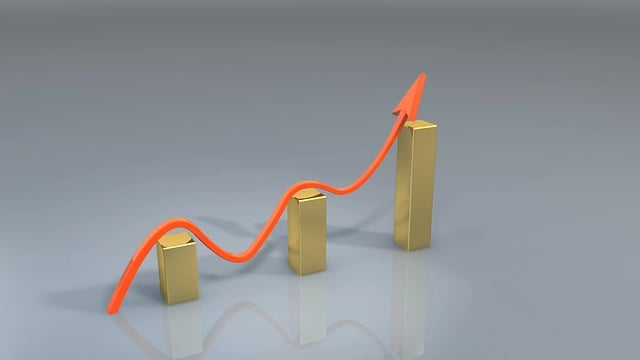
To put it into perspective, experienced traders actually seek to trade high volatility currency pairs, as it allows for greater profits than they could have during low volatility.
The intensity of volatility reflects the state of the market, but it doesn’t just appear itself. To better understand the concept of volatility, and its occurrence on the Forex market, lets look into some events that may trigger it.
Interest rates
Swap rates for leveraged positions held overnight are not the only defining indicator of expected volatility.
Interest rates determined by central banks may cause inevitable volatility spikes on Forex markets. Especially when such decisions are made fast and unexpectedly.
Supply and demand
Forex currency pairs matched with the New Zealand dollar, Canadian dollar, and US dollar are dependent on supply and demand. This is explained by the fact that these are commodity currency pairs.
When exports of Commodities like Oil, Metals or Minerals drop or rise in the relevant country, volatility takes its toll on the financial markets.
Perceived economic strength
Another vital marker for volatility emergence is the economy in general. When a country struggles to establish domestic economic operations properly, the value of its native currency may decline accordingly.
There are multiple indicators that can be analysed to predict future economic performance. Arguably, the most crucial ones are inflation, employment rates, output levels, and production capacity.
How to measure Forex volatility
Traders use different ways to measure the volatility of a particular currency pair on the Forex market. The most reliable and popular way to accurately measure it are indicators.
Today, you can find many chart indicators that can precisely assess volatility, including overall volatility, historical volatility, relative performance, and more.
- Volatility Index (VIX) is considered to be one of the most widely-used indicators. It servers as a tool to determine future expectations of volatility, rather than reviewing its current or historical data.This indicator is especially good for traders that are researching the market and creating a strategy to define the most volatile pairs.
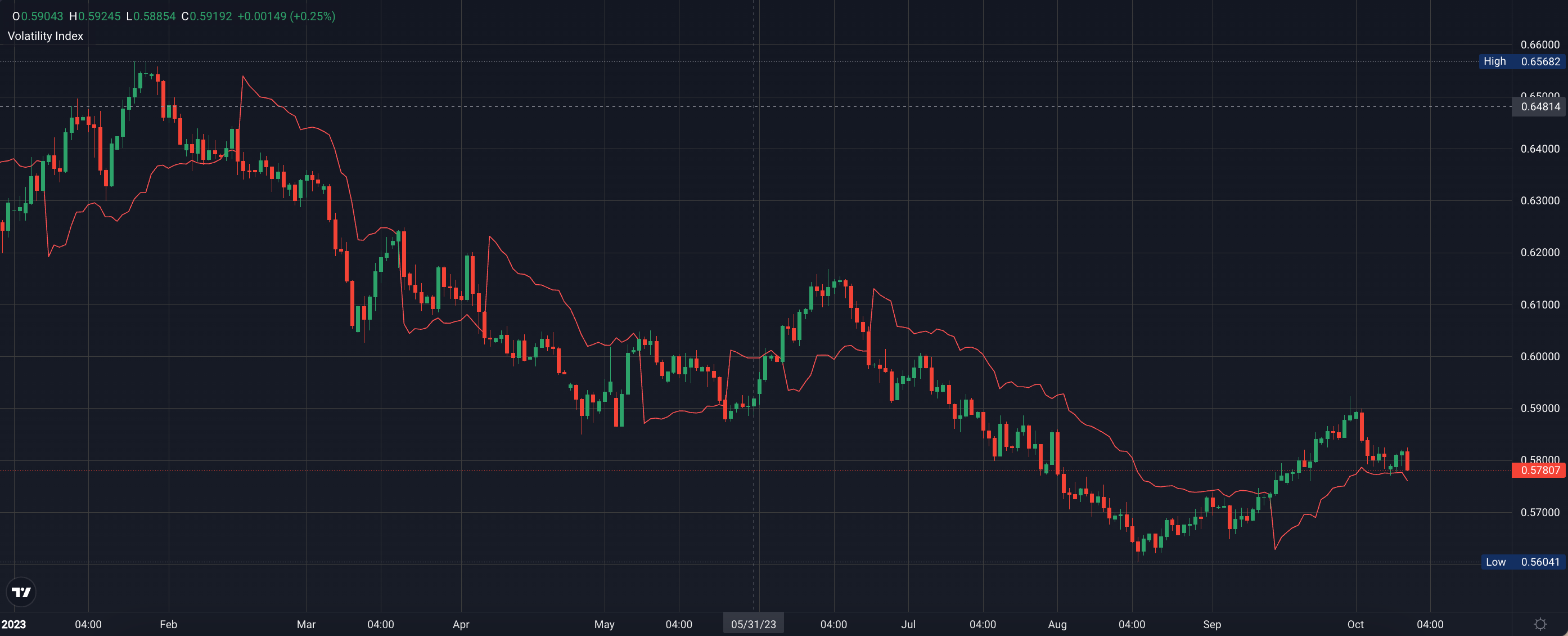
- Historical Volatility (HV) on the other hand, is the best tool to refer to when you are examining a currency pair’s past performance.The best way to read this indicator is by reviewing its values. The higher the historical volatility, the more risk associated with the currency pair.
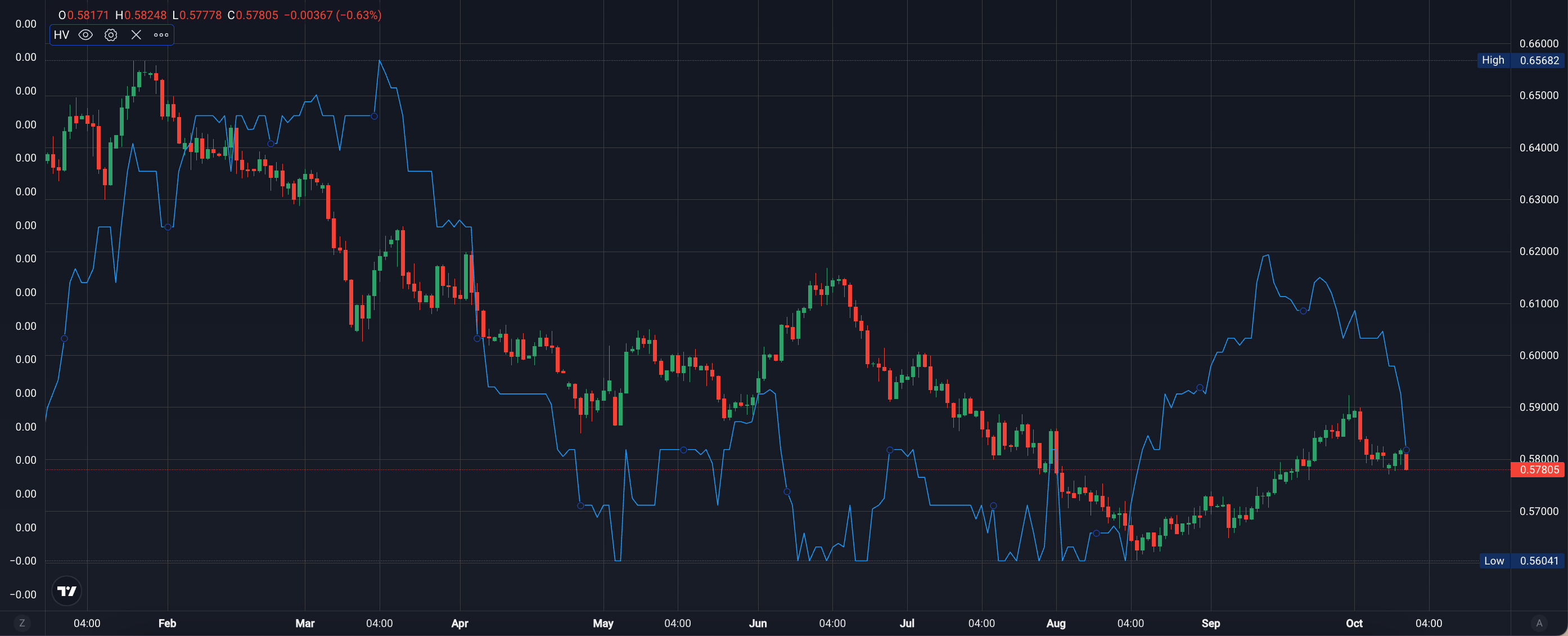
- Relative Volatility Index(RVI) is based on the standard deviation of price changes, making it particularly valuable for gauging market volatility.The RVI indicator uses a 0 to 100 scale system. Readings below 50 suggest a downtrend in volatility, while values above 50 indicate an uptrend is expected.
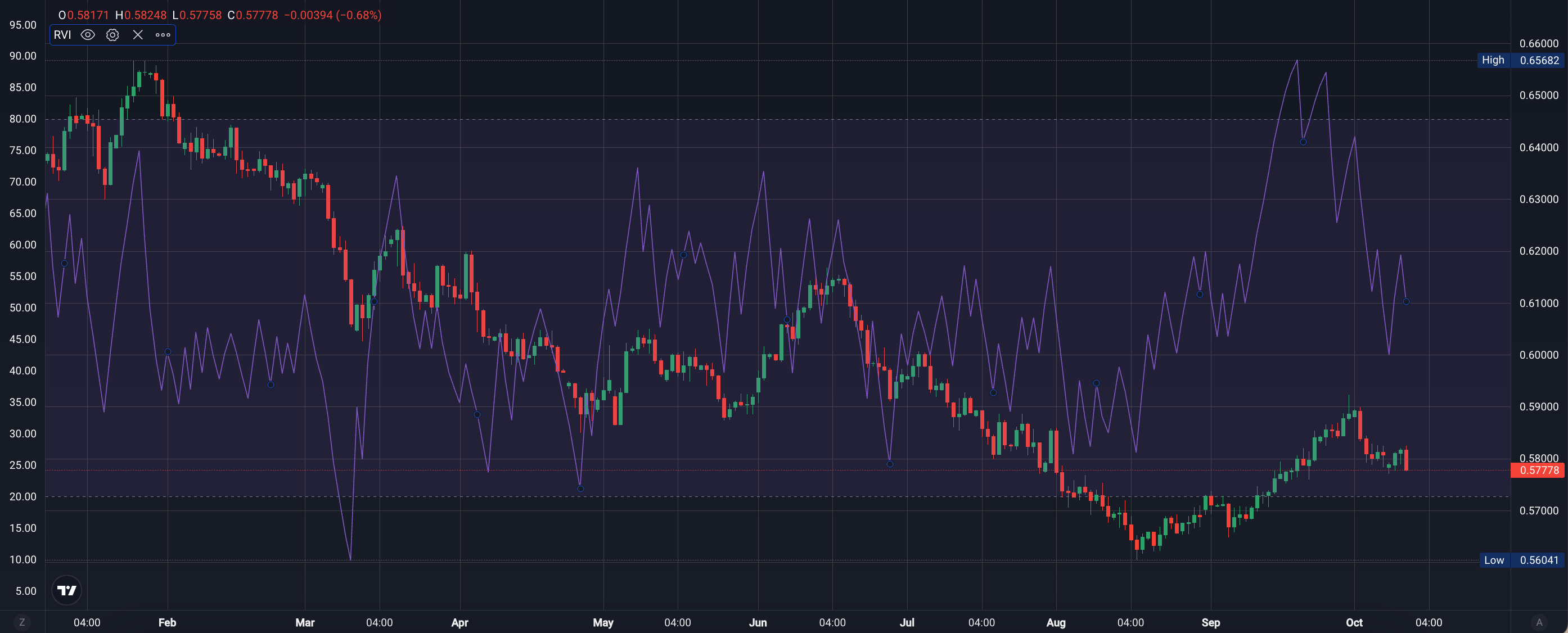
Benefits and risks of trading volatile pairs
Building a strategy to trade the most volatile currency pairs potentially carries an array of benefits and profit opportunities, as well as risks associated with unforeseen market action.
Benefits of volatility
Volatility may open doors to great opportunities. And the apparent advantage of trading the most volatile pairs on the Forex market is high-profit potential.
This can be achieved if you are able to harness extreme conditions, with patience and consistency in trading decisions.
Risks and challenges
The core concern any investor must consider is the implicated risk associated with trading highly volatile currency pairs, as any trading strategy based on volatility involves high risks.
Sharp price spikes and unpredictable market behaviour may become a serious obstacle unless you have a well-thought-out trading strategy, and conduct thorough substantive market analysis.
Most volatile currency pairs
Choosing the most volatile currency pairs may become a challenging task, even for an experienced trader. The Forex market offers dozens, and volatility affects many different currency pairs.

Price movements of currency pairs are calculated in pips. A greater price change in pips for one currency pair over another across the same period, means it’s more volatile.
- Pip is an acronym for “price interest point” or “percentage in point”. It’s the smallest whole unit, and to measure the minimum change between the bid and ask spread in a foreign exchange quote.
The following Forex pairs are considered the most volatile on the market, based on their high volume.
Major pairs
Major currency pairs are the most volatile and frequently traded. These currencies belong to countries with advanced economies. Namely: USD, EUR, GBP, CHF, CAD, AUD, and JPY.
Among these currencies, the most volatile are USD/JPY, USD/CHF, USD/CAD, AUD/USD, GBP/USD, EUR/USD.
AUD/USD
The Australian dollar exchange rate is highly dependent on its country’s primary occupation – exporting Commodities. Unfortunately, from time to time, exports suffer from natural disasters.
In addition, such assets tend to be valued in US dollars, which can affect periodic drawdowns against the US dollar.
USD/JPY
The Japanese yen is considered to be a safe-haven currency. It is the only currency in a G10 economy which has negative rates, and a persistent deflationary problem against inflation.
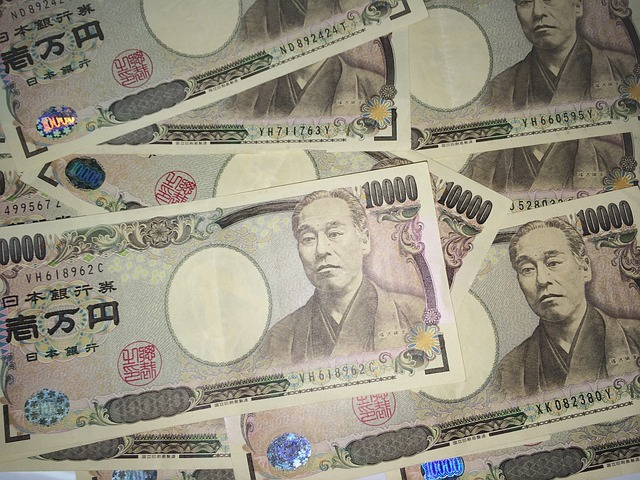
- A safe-haven currency is one that is expected to retain or increase its value during periods of market turbulence.
Unfortunately, tight control by the Bank of Japan makes this pair more difficult to predict using technical analysis than other Forex pairs.
GBP/USD
The British pound is one of the most popular currencies globally. Its pair with the US dollar is the third most volatile in the world, making up an astonishing 12% of all Forex trading volume.
The high volatility of the British pound is tightly related to the local Federal monetary policy and the policies of the Bank of England.
Cross and exotic pairs
Exotic Forex pairs are the most volatile, as their liquidity is low. Their supply and demand in the market are low, so their volatility is high. Exotic currency pairs are a combination of emerging market currency pairs and currencies from advanced economies.
Among these, the most volatile are: USD/RUB, USD/BRL, USD/SEK, USD/TRY, USD/MXN, USD/ZAR.
- Liquidity is the ability of an asset to be quickly bought or sold, with a minimum price gap (spread). An asset is considered liquid if many market participants hold buy and sell orders. If there is no one to sell the purchased asset, it is considered illiquid.
USD/TRY
Lira as a currency has been volatile in the last decade. Many social and political events have been affecting it, as the situation in Turkey remains unstable. This has led to value depreciation against the US dollar since 2019.
USD/RUB
The most unstable Forex pair over the past years, due to several geopolitical issues and sanctions around RUB. Despite the central bank’s control over the currency, its value continues to decline to its 2020-2021 levels.
USD/ZAR
South Africa is one of the largest exporters of Gold, which is valued on the global market in US dollar. If gold appreciates, so does the dollar. Thus, the local currency ZAR, heavily depends on the relationship between this pair.
The more dollars made by South African exporters, the higher the cost for those who wish to purchase USD with ZAR. Because of this, many traders analyse Gold prices before trading this pair.
Strategies for trading the most volatile Forex pairs
A question that many ask is “How do I trade currency pair volatility?” It’s common, and can become quite difficult.

There are several methods to ensure more security and return on investment while you trade Forex volatility. However, you could also find yourself stuck in a bottleneck.
Here are a few popular strategies you may consider when next entering the market.
Position sizing
Position sizing is a trading technique that involves determining the size of a position, or the dollar amount that one is planning to trade.
Controlling purchase amounts when trading volatile currencies helps mitigate potential risks and maximise profit potential.
To break it down, here is a simple example. If you have $10,000 in capital and set your maximum risk level to 2%, you cannot risk more than $200 per trade (2% x $10,000). Even if you lose 10 trades in a row, it’ll still only be 20% of your total capital.
Stop loss and take profit
An integral part of trading currency pairs is risk management. Neglecting the usage of stop loss and take profit orders will most definitely put you at a loss.
Understanding current market volatility is a must for any reliable trading system. Deciding on target profits and placing pending orders are equally important as stop losses.
For example, if your stop loss order is set to a short interval and volatility is high, your position will be automatically closed. Yet an overextended stop loss is not ideal either, as the risk of higher losses will become greater.
On the other hand, proper utilisation of take profit orders allows you to secure potential profits, and avoid them slipping away if the market moves against you.
Real-world examples
A great example of a trading scenario with a volatile currency pair took place on the 15 March 2023.

The depreciating US dollar against EUR unexpectedly recovered on March 15, 2023, though there were no signs that this would happen.
With the Empire Manufacturing USD Index, along with the US Producer Price Index, both indicating a negative trend, the dollar was expected fall.
Yet, the falling shares of Credit Suisse (over 25% on 15 March), which was threatened with bankruptcy, depreciated the EUR instead.
A unique yet challenging opportunity arose, promising good ROI for those who had enough experience to predict unstable market conditions.
Tools and resources for trading volatile pairs
Trading volatile Forex pairs requires proper technical analysis, and chart indicators (VIX, HV, RVI and alike) are a great way to predict future movements, as well as review historical performance.
PrimeXBT is an all-in-one platform that provides access to these and other analytical tools, allowing users to benefit the most from an array of Forex currency pairs available for trading.
It is also worth mentioning the MT5 platform by MetaQuotes, a popular tool for trading Forex. MT5 allows traders to view charts, stream live prices, and place orders with their chosen broker.
Conclusion
The Forex market is a place of opportunity and danger. For some currency pairs, volatility is a defining factor for potential profits a trader can take advantage of.
Making a decision on whether to trade volatile Forex pairs must always be based on thorough analysis, a deep understanding of volatility, and proper risk management.
Competent application of all aspects of a well-constructed strategy will allow you to trade carefully and successfully with the most volatile currency pairs.
Which Forex pair moves the most?
Most volatile currency pairs don't specifically imply they are fast moving. Though currency pairs with relatively high volatility and liquidity allow them to move the most compared to others.
Which Forex pair is most profitable?
Despite ones opinion on the most or least volatile currency pairs, there is no such thing as the most profitable. Profitability depends on a trader's experience and ability to utilise diverse strategies.
What are the riskiest Forex pairs?
A risky pair is also a relative concept, yet the absence of necessary liquidity in some exotic currency pairs may signal increased risk. In this regard, more liquid currency pairs may be a better choice.
The content provided here is for informational purposes only. It is not intended as personal investment advice and does not constitute a solicitation or invitation to engage in any financial transactions, investments, or related activities. Past performance is not a reliable indicator of future results.
The financial products offered by the Company are complex and come with a high risk of losing money rapidly due to leverage. These products may not be suitable for all investors. Before engaging, you should consider whether you understand how these leveraged products work and whether you can afford the high risk of losing your money.
The Company does not accept clients from the Restricted Jurisdictions as indicated in our website/ T&C. Some services or products may not be available in your jurisdiction.
The applicable legal entity and its respective products and services depend on the client’s country of residence and the entity with which the client has established a contractual relationship during registration.




